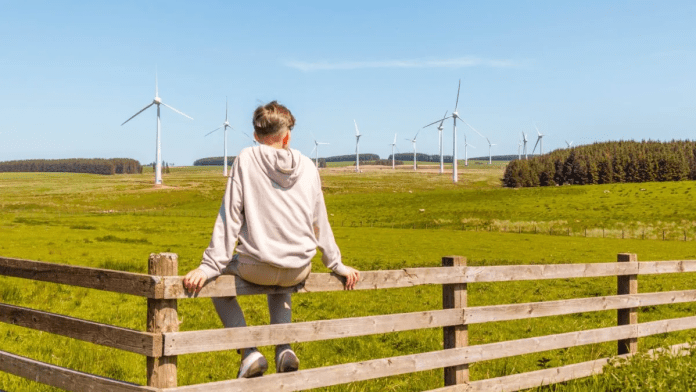🕒 Last updated on July 24, 2025
The goal of the government is to facilitate the installation of wind turbines in backyards. Only detached homes are currently permitted to install a single small turbine without obtaining planning clearance. Terraced and semi-detached homes still need permission, which is often a big hassle.
New plans may change that. The government is looking at ways to help not just homes, but also farms and small businesses install wind turbines more easily. This could mean relaxing the rules for millions of people who live in terraced or semi-detached homes.
However, no decision has been made yet. The proposals are still being reviewed. But many experts say that even if the rules change, most people are still unlikely to install wind turbines at home.
High Costs and Low Rewards
The biggest reason most people won’t install a wind turbine is the cost. A small home wind turbine that can meet the energy needs of a typical house may cost around £20,000 to £25,000. That’s a lot of money. Especially when you compare it to solar panels, which can do the same job for about £4,000.
Also, installing a wind turbine is not as easy as it sounds. It depends on how much wind there is in your area. Most homes, especially in towns or cities, don’t get enough wind. Trees, buildings, and fences block the wind. This makes the turbine work poorly.
Even in the countryside, the wind needs to be strong and steady. For turbines to produce usable electricity, they must spin a lot. But near buildings or in small gardens, the wind often changes direction or becomes weak. This makes the turbine less efficient.
Before 2016, homeowners were paid for extra electricity they generated and sold to the grid. This made installing turbines more attractive. But the scheme ended. Since then, installations have dropped sharply. In fact, only four new certified wind turbines were put up in homes in 2024.
Gardens Are Just Too Small
Detached homes usually have bigger gardens. That’s why they make up nearly all of the 3,400 certified home wind turbines in the UK. But even these are rare, and almost all were installed before 2016.
Terraced and semi-detached homes have much smaller gardens. In many cases, there just isn’t enough room for a wind turbine. And if there is, the location may still not be windy enough to make it worth the effort or cost.
Tanks Over Sanctions: Russia’s Answer to Battlefield Losses Is the T-90M “Proryv”
Turbines can also be noisy and need regular maintenance. Some people don’t want a big, spinning machine making noise in their garden. Others don’t want to deal with fixing it if it breaks down. All of these are reasons why most people won’t choose this option, even if the rules become easier.
In cities or busy towns, wind turbines make even less sense. The wind is often blocked or changed by tall buildings. This leads to very poor performance. It also raises safety and noise concerns for neighbors.
Businesses and Farms May Still Benefit
While home turbines may not take off, small farms and rural businesses might see benefits. These places usually have more space. They also tend to be in windier locations.
Farmers already use renewable energy like solar panels and bioenergy. A small or medium wind turbine could help them reduce energy bills or keep things running during power cuts. Some already use wind power, but the current planning rules can slow things down.
The government is reviewing ways to update the planning system. This may make it easier for farms and businesses to get approval for wind turbines. Making the process simpler could support clean energy production in rural areas.
That said, even in the countryside, wind turbines work best in specific conditions. A flat, open field or a hill with no nearby trees or buildings is ideal. But not every farm or rural site has those perfect conditions.

